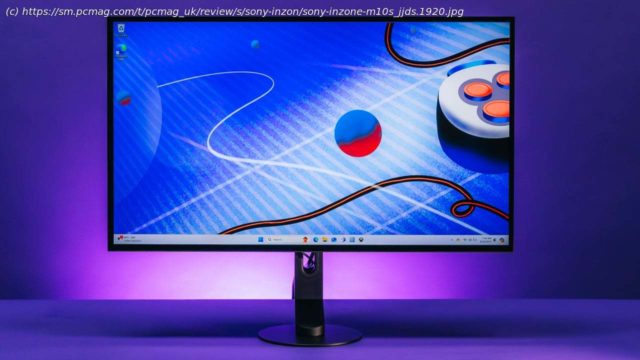Sony’s Inzone monitors return with a significant redesign
It’s two years since Sony launched its Inzone gaming brand, with headsets and gaming monitors meant for both console (naturally, the PlayStation 5) and PC play. The initial monitor lineup was hit or miss, with the excellent 4K Sony Inzone M9 and the underwhelming Inzone M3. Now the company has unveiled refreshed and redesigned Inzone monitors, including the M10S ($1,099) reviewed here—a 27-inch QHD OLED display with a sky-high 480Hz refresh rate. Those are some impressive specs, and although Sony arrives a little late to the party in a year packed with new 27- and 32-inch OLEDs, the M10S still has enough appeal to tempt competitive players looking for impressive visual fidelity to match their high-performance play. We think mainstream gamers, however, are better off with the Editors’ Choice award-winning Corsair Xeneon 34WQHD240-C. Design: White and Black Are So Last Year
Right away, the Inzone M10S makes an impression with some bold design choices. Previous Inzone monitors shared the same white and black color scheme as the PlayStation 5, but the M10S distances itself from the console completely, opting for an all-black silhouette similar to that of many other gaming monitors. I actually think this is a bit of a bummer, as I liked the bold design choices of the previous displays, but the changes here seem to be made with purpose.
Because the M10S is an esports monitor, the bulky tripod stand of the M3 and M9 wouldn’t work as it’s unsuitable for competition play. Instead, the M10S uses a small circular base with an angled stand, pushing the monitor slightly further back while offering a full 180 degrees of swivel. This flexibility is better for esports gamers who use a variety of play styles, including placing the keyboard, mouse, and sometimes even their faces against the screen. This also separates the Inzone M10S from other esports monitors like the Alienware 500Hz Gaming Monitor, which deploys a similar stand design philosophy, albeit applied more traditionally in a larger hexagon shape.
Flipping the Inzone around, we can admire the screen’s ultra-thin bezels, measuring just 0.23 inch at its thinnest edge. The oval backside houses the ports and the monitor’s cooling system. As far as I/O goes, you’ll find two HDMI 2.1 ports, two USB-A ports, a USB-B jack, a 3.5mm headphone jack, and one extra USB-A port dedicated to software updates for the monitor.
The Inzone M10S also has an additional I/O port that we haven’t seen in many monitors: DisplayPort 2.1. The last time we saw this connector utilized was in the Samsung Odyssey Neo G9, a gorgeous 7,680-by-2,160-pixel ultrawide monitor. DisplayPort 2.1 can handle more than double the bandwidth of version 1.4 (80Gbps versus 32.4Gbps), but it’s perhaps overkill on the M10S. Unlike the Neo G9, which needs the additional bandwidth to maximize resolution and refresh rates, the M10S doesn’t need 80Gbps to reach 480Hz at 2,560 by 1,440 pixels. Moreover, at this writing the only GPUs that support DisplayPort 2.






